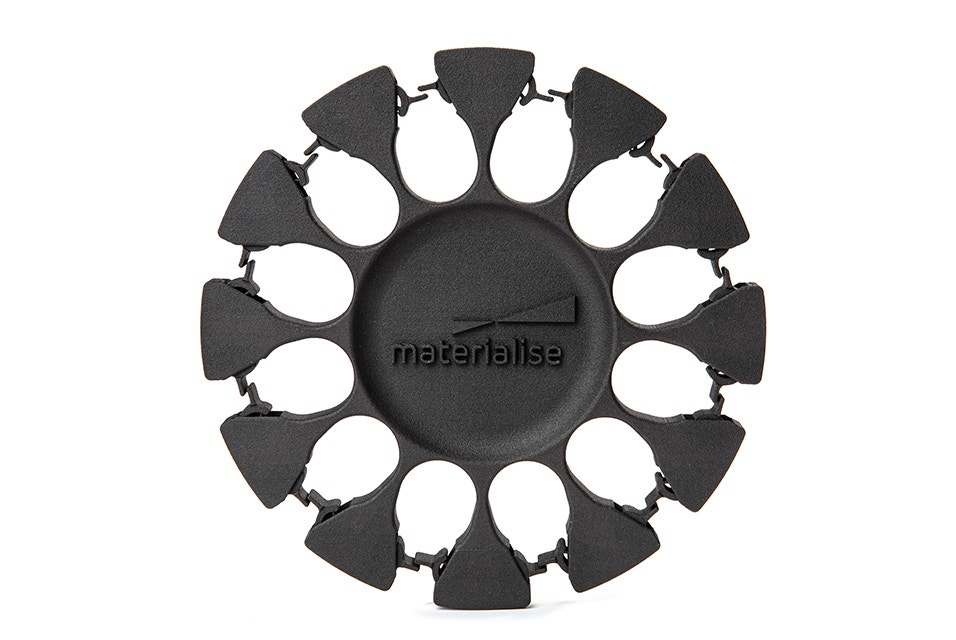CASE STUDY
Organizing Meters of Aircraft Wiring: Fokker Elmo’s Cable Twist Wheels

Dutch company Fokker Technologies, now owned by GKN Aerospace, is specialized in the designing and manufacturing of highly engineered aircraft systems. Fokker Elmo, a division of the company, particularly focuses on Electrical Wiring Interconnection Systems (EWIS), or solutions to keep the immense wiring of an aircraft clear and manageable before and during installation.
The challenge
Optimizing a part for wire organization
Imagine bundling hundreds of stiff and unwieldy wires, long enough to reach from a plane’s tail to the cockpit, according to a carefully planned design. Without the help of the right production tools, this would be quite impossible.
Fokker Elmo designs a cable harness, a commonly used part in aircraft, to bind the wiring into one structure. Sometimes the cable harness needs flexibility in the aircraft, but bending the wires — a practical necessity for storage, transportation, and installation — is much more difficult than it sounds. The cables, being stiff, can be very challenging to twist. The solution? A twist wheel, that creates a compact bundle of wires that can be twisted or bent together. The cables are fed into the wheel through a snap mechanism and stay securely in the wheel’s niches during handling.
When Fokker Elmo came into contact with Materialise, they already had a design for casting in polyurethane with rubber snap hinges attached later. “It wasn’t the most ideal tool,” says Han Suijkerbuijk, Project Engineer and Fokker Elmo. “The assembly of the tool took a lot of work, and the resulting product was heavy and fragile. On top of that, it was expensive.”
In search of a lighter, cheaper option, Fokker Elmo approached Materialise to study the possibility of 3D printing the twist wheel.
The solution
Design freedom with additive manufacturing
Having observed the design of Fokker Elmo, Account Manager Mathieu Cornelis realized that Materialise’s expertise could make the design even better by fully exploiting the benefits of 3D printing. In the original design, the rubber snap mechanism had to be pushed down to evacuate a wire. In tight spaces with little room for maneuvering, this could pose difficulties.
“With 3D printing and its promise of limitless design, I could propose a snap mechanism which hinges both ways,” says Mathieu. “Even better, the hinges could be integrated into the design, for a single-build part.” That eliminated the need for assembly, which had been a shortcoming of the original design.


Then the engineering team at Materialise carried out rigorous testing to ensure that the hinges closed tightly in both directions — meaning that wires would be secure in the wheel’s grooves once pushed into place but could be evacuated by pulling.
The result
Low weight, high functionality
Once the design was ready, the team tackled the factor which had piqued Fokker Elmo’s interest in 3D printing in the first place: weight optimization. The heavier the wheel is, the harder it would be to turn. After Materialise 3-matic was used to create a lightweight structure, the new and improved cable twist wheel design was ready for production. This resulted in a lean, efficient cable twist wheel — no assembly needed — which could then be color-dyed at Materialise in accordance with the color codes used on the relevant aircraft. And all that with substantial cost savings.
Share on:
This case study in a few words
Fokker Elmo
Aerospace
Design and engineering
Materialise 3-matic
Design freedom
Weight reduction
